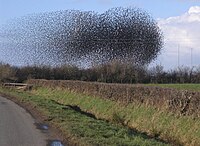
Porochemothermoelastic solutions considering fully coupled thermo-hydro-mechanical-chemical processes to analyze the stability of inclined boreholes in chemically active porous media
Sign Up to like & getrecommendations! Published in 2021 at "Computers and Geotechnics"
DOI: 10.1016/j.compgeo.2021.104019
Abstract: Abstract The present paper presents a fully coupled thermo-hydro-mechanical-chemical (THMC) model for chemically active deformable porous media (such as clay or clay-like shale) under local thermal and chemical equilibrium (LTE and LCE) conditions. The proposed… read more here.
Keywords: thermo hydro; mechanical chemical; fully coupled; chemical ... See more keywords

Longwave nonlinear theory for chemically active droplet division instability
Sign Up to like & getrecommendations! Published in 2019 at "Physica D: Nonlinear Phenomena"
DOI: 10.1016/j.physd.2019.02.002
Abstract: Abstract It has been suggested recently that growth and division of a protocell could be modeled by a chemically active droplet with simple chemical reactions driven by an external fuel supply. This model is called… read more here.
Keywords: droplet division; chemically active; model; nonlinear theory ... See more keywords

Effects of accelerated ageing conditions on the mechanism of chemically-active antifouling coatings
Sign Up to like & getrecommendations! Published in 2018 at "Progress in Organic Coatings"
DOI: 10.1016/j.porgcoat.2018.09.004
Abstract: Abstract The accelerated ageing of chemically-active antifouling coatings was investigated by performing in vitro and in situ static/dynamic cycles. One of the main objectives of this study was to develop an ageing test able to… read more here.
Keywords: mechanism; chemically active; two coatings; antifouling coatings ... See more keywords

Chemically Active Particles: From One to Few on the Way to Many
Sign Up to like & getrecommendations! Published in 2020 at "Langmuir"
DOI: 10.1021/acs.langmuir.9b03973
Abstract: Chemically active particles suspended in a liquid solution can achieve self-motility by locally changing the chemical composition of the solution via catalytic reactions at their surfaces. They operate intrinsically out of equilibrium, continuously extracting free… read more here.
Keywords: active particles; chemically active; particles one; self ... See more keywords